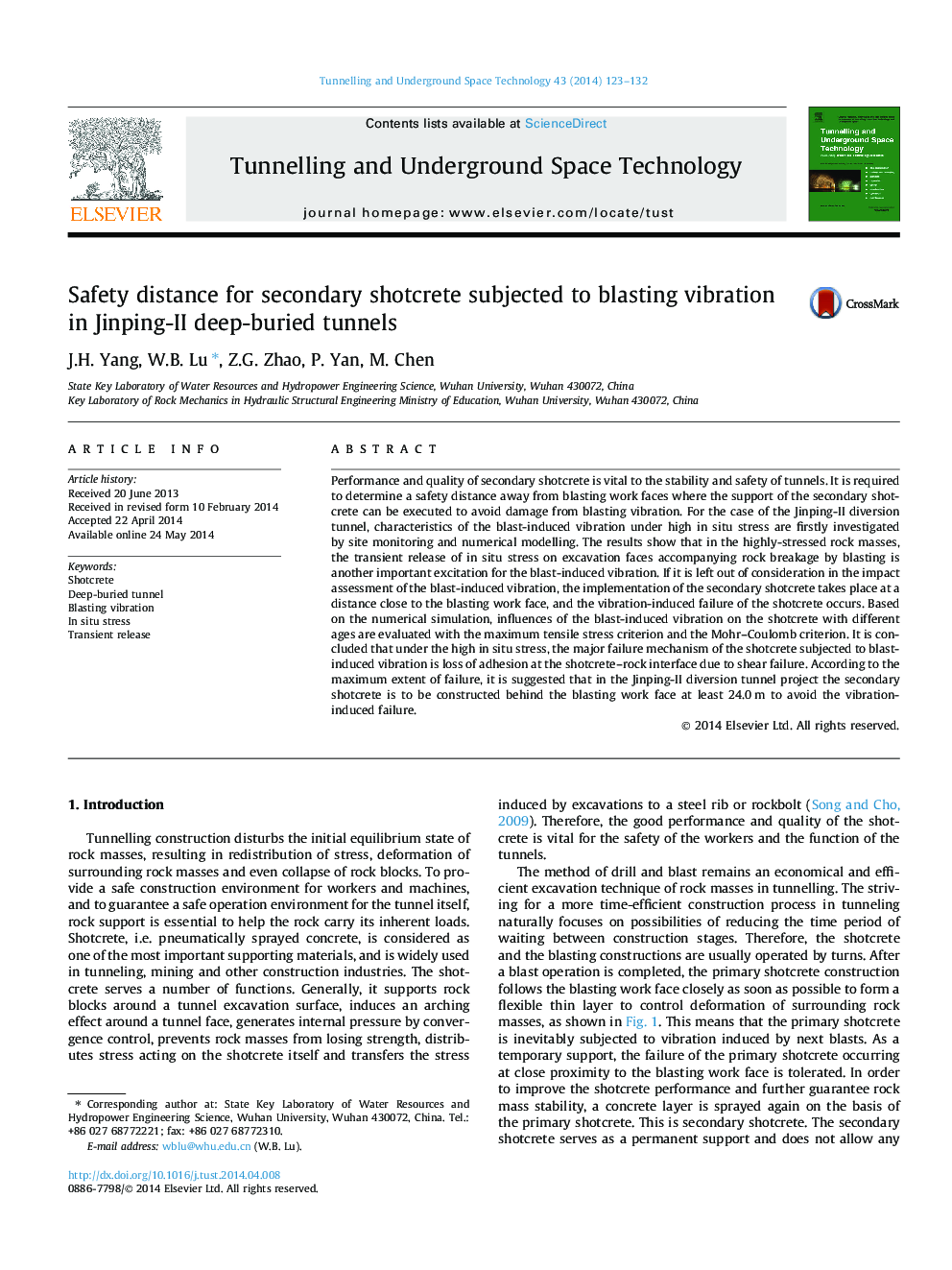| Article ID | Journal | Published Year | Pages | File Type |
|---|---|---|---|---|
| 311839 | Tunnelling and Underground Space Technology | 2014 | 10 Pages |
•Characteristics of blast-induced vibration in deep-buried tunnels are investigated.•Transient release of in situ stress is an excitation for blast-induced vibration.•Failure mechanism of shotcrete subjected to blast-induced vibration is discussed.•A safety distance is suggested to prevent vibrational failure of secondary shotcrete.
Performance and quality of secondary shotcrete is vital to the stability and safety of tunnels. It is required to determine a safety distance away from blasting work faces where the support of the secondary shotcrete can be executed to avoid damage from blasting vibration. For the case of the Jinping-II diversion tunnel, characteristics of the blast-induced vibration under high in situ stress are firstly investigated by site monitoring and numerical modelling. The results show that in the highly-stressed rock masses, the transient release of in situ stress on excavation faces accompanying rock breakage by blasting is another important excitation for the blast-induced vibration. If it is left out of consideration in the impact assessment of the blast-induced vibration, the implementation of the secondary shotcrete takes place at a distance close to the blasting work face, and the vibration-induced failure of the shotcrete occurs. Based on the numerical simulation, influences of the blast-induced vibration on the shotcrete with different ages are evaluated with the maximum tensile stress criterion and the Mohr–Coulomb criterion. It is concluded that under the high in situ stress, the major failure mechanism of the shotcrete subjected to blast-induced vibration is loss of adhesion at the shotcrete–rock interface due to shear failure. According to the maximum extent of failure, it is suggested that in the Jinping-II diversion tunnel project the secondary shotcrete is to be constructed behind the blasting work face at least 24.0 m to avoid the vibration-induced failure.
Graphical abstractFigure optionsDownload full-size imageDownload as PowerPoint slide
